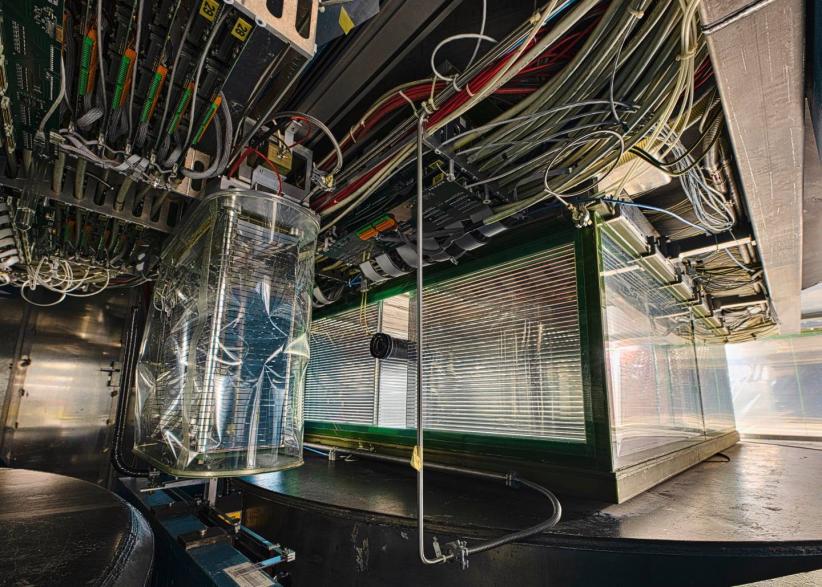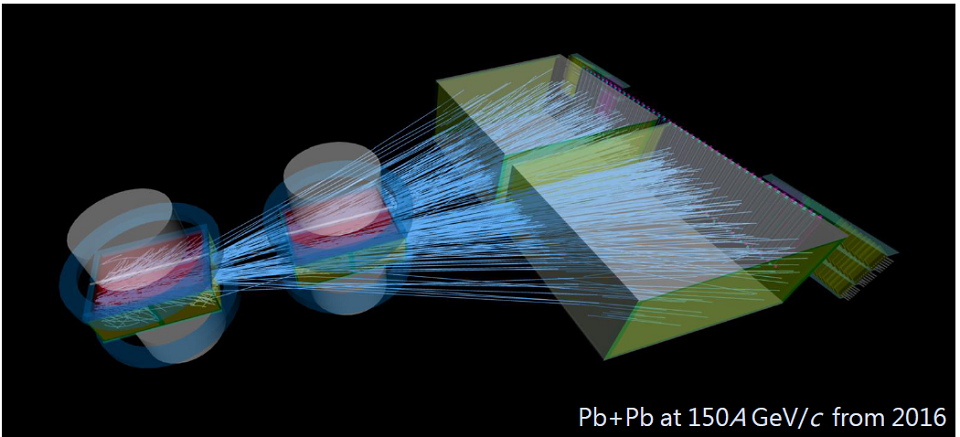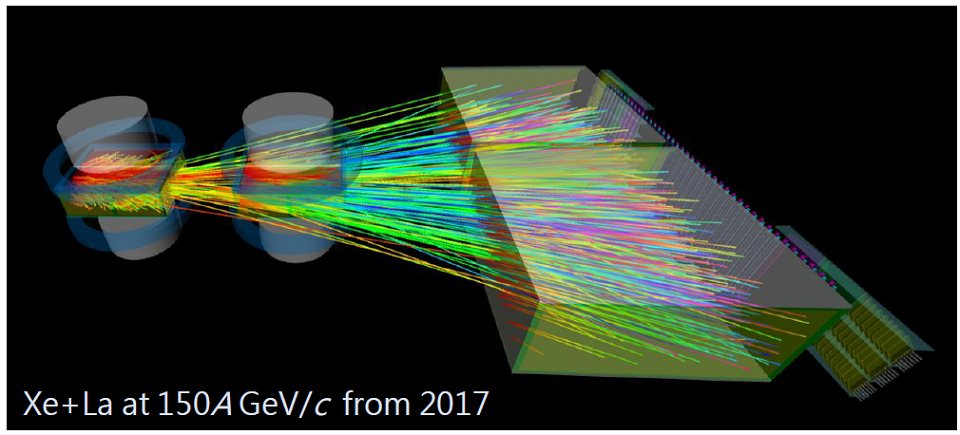The NA61/SHINE experiment – the success of Polish scientists in an international project
The physics of heavy ion collisions is a field that aims at learning about the character of the strong force. Since it is impossible to isolate a single colour particle, describing a phase diagram of strong interactions of matter has become a priority. A single experimental measurement is not sufficient to define such a structure. Hence, it is necessary to conduct various analyses in many fields in which each field provides a part of the answer. WUT researchers are making a great contribution to the conducted research.
A team of researchers at the Faculty of Physics at WUT are carrying out research as part of the NA61/SHINE experiment at the CERN, which is the biggest nuclear physics research centre in the world. The centre is located at the Swiss and French border near Geneva. The NA61/SHINE experiment engages physicists from all over the world, with Polish research teams constituting as much as 30% of all teams and making an enormous contribution.
One of the main items of the programme of this physical experiment is to test the state of the matter present at the stage of the early universe in the so-called quark-gluon plasma. A quark-gluon plasma is formed under extremely high pressure or in extremely high temperatures. Quarks and gluons, the most fundamental particles of matter, move freely in a quark-gluon plasma (in normal conditions they are only in a bound state). Conditions for plasma production are created during heavy ion collisions at the CERN laboratory. It is necessary to understand the nature of a quark-gluon plasma to understand how the matter we observe now was formed.
NA61/SHINE is a stationary shield experiment. This means that a speeding particle beam hits a motionless shield behind which there is a detection system. The density of the collision energy is high enough to produce mass following the famous Einstein’s equation E=mc2. New particles begin to form, which can be registered in the detection system.
The modernisation of the experiment
Currently, the NA61/SHINE experiment is becoming improved with a substantial contribution on the part of the WUT researchers. The improvements include the reading electronics of the main detectors registering the particle trajectories, i.e. Time Projection Chamber (TPC), among other things. A new Vertex Detector (VD) is under construction, based on the technology of silicon sensors. The technology is used in smartphones, among others, and the detector sensors are capable of taking up to 8,000 “shots” per second. The modernisation aims to test the production of open charm, i.e. particles containing the charm quark, without the anti-charm quark. The re-start of the modernised detection system and the first data collection are scheduled for this summer.
“Charm quarks belong to heavier quarks. They are formed in the early stages after the collision and can carry the information on the production of quark-gluon plasma,” explains Wojciech Bryliński, M.Sc. “Open-charm particles have never been directly tested with the SPS accelerator energy, and the predictions of mathematical models about the quantity of the produced charm quarks differ by two orders of magnitude. Research on the production of charm quarks will provide unique results and add to a better understanding of the laws governing heavy quark production.
Accuracy and precision
Charm particles disintegrate very quickly after production. Their life span is so short that an incredibly precise detector is required, which will facilitate the reconstruction of the disintegration point with micrometre accuracy. The Vertex Detector, currently under construction, will guarantee such precision.
“A prototype of such a detector was implemented in 2016 and participated in collecting the data for Xe+La collisions at a beam speed of 150 GeV/c, among others,” says Wojciech Bryliński, M.Sc. “The analysis of the collected data is the subject of the research conducted under the FWEiTE-1 competition for research grants. So far, precise calibration of the position of silicon sensors has been successfully conducted and the analysis of D0 mesons, the lightest open-charm particles, has been started. The promising initial results support the measurement concept and the validity of the future programme of the physical experiment.
Other aspects of the project
The research team at the Faculty of Physics at WUT does not only conduct the data analysis. Our researchers are involved in the preparation of the Vertex Detector and the software of the system of data acquisition.
“We are also working on the system of detection and reduction of noise in the collected data,” says Bryliński, M.Sc. “The replaced electronics in the time projection chambers will facilitate 10 times faster data collection. With such massive amounts of data, it is indispensable to apply a noise-filtering tool during movement before the data is recorded on the disc.”
Machine learning is used to eliminate noise. “A trained neural network can recognise a signal coming from the particles moving through the detector and a signal coming from the electronic noise,” continues Bryliński, M.Sc. “This way the collected data can be filtered.”
Initial results of the attempts show over 90% effectiveness of the algorithm. This method of noise elimination will assist in reducing the amount of the recorded data by over a half.
The project "Research on the fluctuation and hadron production in ion collisions in the NA61/SHINE experiment" is implemented under IDUB-POB-FWEiTE-1 competition for research grants.
Research team:
- Wojciech Bryliński, M.Sc, doctoral student, Faculty of Physics at the Warsaw University of Technology, physical sciences
- Anna Kawęcka, B.Sc, student, Faculty of Physics at the Warsaw University of Technology, physics and nuclear technology
- Maja Maćkowiak-Pawłowska, Ph.D, Assistant Professor, Faculty of Physics at the Warsaw University of Technology, physical sciences
- Marcin Słodkowski, Ph.D, Assistant Professor, Faculty of Physics at the Warsaw University of Technology, physical sciences
- Dariusz Tefelski, Ph.D, Assistant Professor, Faculty of Physics at the Warsaw University of Technology, physical sciences
- Jakub Zieliński, B.Sc, student, Faculty of Physics at the Warsaw University of Technology, physics and nuclear technology





